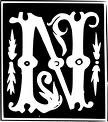"The imagination must be allowed to express itself freely, otherwise it will die."
Nice! And challenging to answer.
I can try to do this with an analogy... I see a moment of conscious experience in much the same way we experience a moment in a symphony. There are many instruments that are playing (or not) at any given moment, and with varying degrees of loudness. And most of us don't stop to parse the whole moment into its component parts.
The violins are almost always playing, and it's fairly easy to detect their influence. To me, they are like the 'past', or the influence of memory upon an individual moment of conscious experience. The violas are much fewer in number relative to the violins, and to me they represent the influence of short-term and working memory - information that is not as firmly anchored as that which resides in long-term memory. Their contribution is generally much harder to detect or parse from the whole. The cellos represent the near-future - that is, the future for which critical events have already been set in motion. Occasionally someone writes a short cello solo, or silences the other instruments to the point where the cello is noticeable. The basses represent the far future. They are generally fewer in number, and their presence in the whole moment is usually more difficult to detect without training.
While each of the four string instruments has a different range of resonance, they all share the property of being a stringed instrument. (I.e., It's all time in some sense - change from one moment to the next.) One could also argue that an individual orchestra (brain/consciousness) can be organized (wired) with a different, though mostly overlapping, set of instruments from any other orchestra. But the strings are still the foundation of any orchestra.
While listening to a symphony, it's possible to momentarily lose track of the whole sound as you choose to isolate and pay attention to the sound of one particular instrument. But all the other sounds are still there. You recognize the sound of a particular instrument because of your previous exposure to that instrument. (I played the cello for four years.) It's easier to isolate and hear/see the influence of that instrument with practice.
In this sense, time to me is like a specific series of notes within a whole moment. Some of the notes may come of the cello, but most of the notes I'm conscious of probably come from the violin. This is quite a subjective, self-absorbed way of looking at time, because I'm parsing the composition of my orchestra, rather than assuming that we are all listening to the same orchestra. So how do I visualize the objective timeline of consensus reality - that thing that moves from the Big Bang through the Middle Ages and into the future?
When I'm thinking in 5 dimensions, I usually don't. I see those events/ideas primarily (though not entirely) as moments in my symphony that reflect influences from my subjective past/future. If an idea or event is something that I have been exposed to many times, then the moment reflects a strong influence from the past (violins). But it may reflect my subjective past in a variety of ways. (Think range of notes, and don't forget that there are other instruments playing as well.)
Sounds like an incredibly self-absorbed perspective, doesn't it? I haven't expanded this analogy to the point where I can explain how I see multiple-observer effects yet. But I'm sure some part of my brain will keep plugging away at it. Thanks - this was fun! :)
Friday, November 13, 2009
Subscribe to:
Post Comments (Atom)


No comments:
Post a Comment